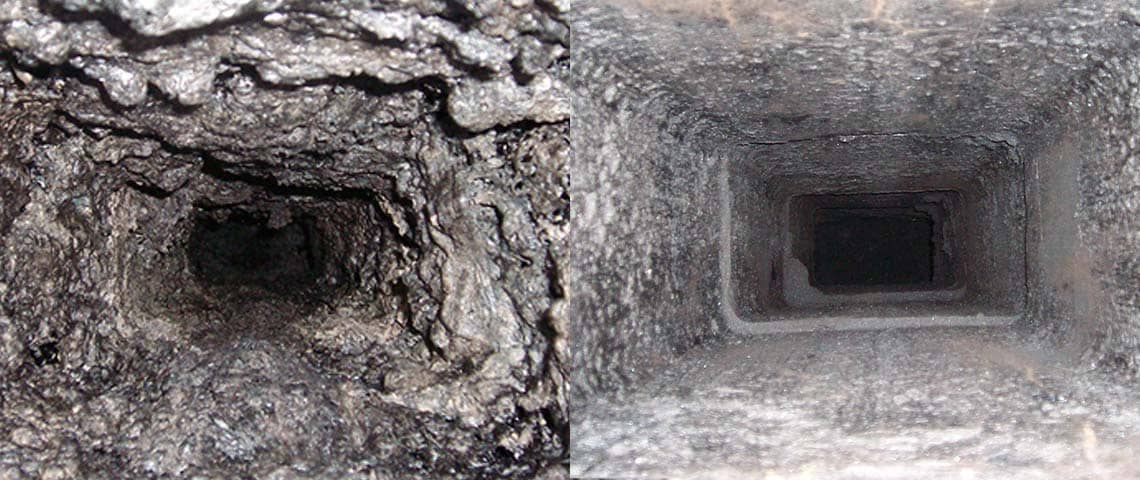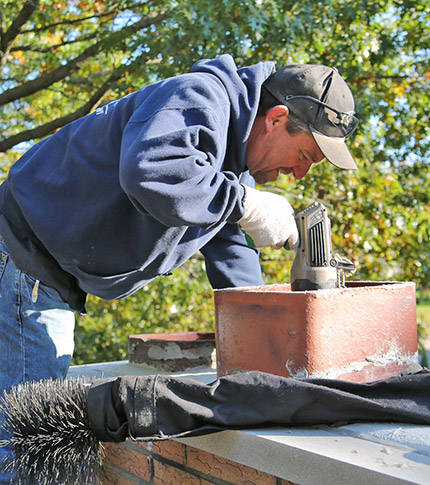San Jose Chimney Repair: How to Identify Early Indications of Chimney Damage
San Jose Chimney Repair: How to Identify Early Indications of Chimney Damage
Blog Article
How to Determine Typical Issues That Require Chimney Repair Service in Your Home
Identifying usual problems that demand chimney repair service in your home is vital for keeping both security and performance. Regular assessments can expose considerable indicators such as creosote build-up, noticeable splits, and indications of dampness invasion. What are the details actions one can take to guarantee their smokeshaft continues to be in ideal condition?

Signs of Creosote Accumulation
Among one of the most essential signs of smokeshaft problems is the accumulation of creosote, a by-product of timber combustion. This material forms when smoke cools down and condenses on the walls of the smokeshaft, bring about a thick, tar-like residue. In time, creosote accumulation can pose considerable security threats, consisting of an increased risk of chimney fires.
House owners ought to be cautious in observing indications of creosote build-up. One primary sign is the visibility of a solid, pungent odor rising from the chimney or fireplace, especially throughout cooler months when the fireplace remains in use. chimney cleaning san jose. In addition, dark, glossy deposits on the chimney flue or in the firebox may signal excessive creosote build-up
Routine evaluations can aid determine the extent of the issue. It is suggested that a professional chimney sweeper conducts an annual examination to assess creosote degrees and perform necessary cleansings. If homeowners observe any type of changes in the performance of their fireplace, such as reduced draft or trouble in beginning a fire, it may show a creosote concern. Addressing these indications quickly is necessary to keeping a secure and reliable smokeshaft system.
Noticeable Splits and Damage

Visible cracks and damage in a smokeshaft can work as significant warning indications of underlying structural concerns that might require prompt focus. These imperfections can develop from different elements, consisting of temperature changes, settling of the home, and damage of materials over time. It is important to assess both the exterior and interior of the smokeshaft for any type of signs of fracturing, spalling, or crumbling masonry.
Hairline cracks might show minor settling, while bigger cracks might signal a more major architectural concession. Home owners should additionally be mindful of any kind of leaning or turning of the chimney, as this can posture security risks and show fundamental issues.
Routine assessments by a qualified professional can determine these noticeable signs early, stopping extra extensive repair services down the line. If you notice any fractures or damage, it is suggested to seek advice from a chimney professional who can examine the circumstance and advise proper repair choices (chimney cleaning san jose). Overlooking visible splits can result in raised costs and potential threats in the future, emphasizing the significance of prompt treatment
Water Leaks and Dampness
Determining water leakages and moisture invasion in a smokeshaft is necessary for keeping the honesty of both the smokeshaft structure and the home. Water penetration can result in significant damage with time, consisting of structural wear and tear, mold development, and jeopardized security. Among one of the most common indications of moisture concerns is the visibility of efflorescence, which shows up as white, grainy down payments on the chimney's outside. This occurs when water vaporizes, leaving behind mineral salts.
Additionally, property owners must examine for signs of water spots on indoor wall surfaces or ceilings near the smokeshaft, as these may suggest leakages. Routine examination of flashing, the material that secures the chimney to the roof covering, is crucial. Harmed or improperly set up blinking can enable water to permeate into the chimney framework.
During heavy rains or snowmelt, take note of pooling water near the chimney base or on the roofing system. This can indicate inappropriate water drainage or blockages that require to be dealt with. Routine maintenance and punctual fixings are crucial in preventing moisture-related problems, making certain the chimney continues to be functional and risk-free for use.
Undesirable Smells

Another prospective resource of smell is animal intrusion. Birds, raccoons, or other wild animals might nest in the chimney, bring about the disintegration of organic products, which produces foul scents. In such situations, it is critical to address the trouble quickly to ensure both the safety and security and convenience of your family.
Additionally, stationary air in a chimney can contribute to musty smells, frequently suggesting an absence of correct ventilation. Preserving ample air movement is vital to protect against these problems and make certain the efficient operation of your chimney system.
Routine assessments and cleansing by an expert can aid identify and correct these odor-related issues, securing your home from future issues.
Poor Draft and Smoke Issues
A persistent poor draft in a smokeshaft can substantially prevent the efficient procedure of a fireplace or wood discover here oven, bring about smoke-related issues that compromise interior air high quality. This condition typically causes smoke rippling back site here right into the space, creating discomfort and potential health and wellness dangers for occupants.
Several variables can add to bad draft issues. Blockages created by creosote accumulation, particles, or pet nests can prevent correct air flow, compeling smoke to turn around instructions. Furthermore, an incorrectly sized flue or chimney can harm ventilation, making it difficult for smoke to escape efficiently.
Climate conditions, such as solid winds or reduced climatic pressure, can likewise impact chimney performance, worsening draft problems. Property owners may observe signs like extreme smoke, sticking around smells, or trouble beginning fires.
It is critical to attend to these problems promptly, as extended direct exposure to smoke can bring about respiratory system concerns and various other wellness problems. Routine chimney examinations and maintenance are necessary to determine and rectify bad draft problems. Consulting a professional chimney sweeper can make sure detailed cleansing and examination, bring back optimum performance to your chimney system and boosting the security of your home.
Verdict
In summary, routine inspection of chimneys is important for determining common issues that necessitate repair work. Indicators such as creosote build-up, visible fractures, water leakages, unpleasant odors, and poor draft problems work as essential indicators of potential problems. Dealing with these concerns proactively can improve the safety and efficiency of the chimney system, inevitably protecting against a lot more serious damages and guaranteeing ideal efficiency. Homeowners need to stay watchful in keeping track of these indicators to preserve a functional and risk-free smokeshaft structure - chimney cleaning san jose. the original source
Report this page